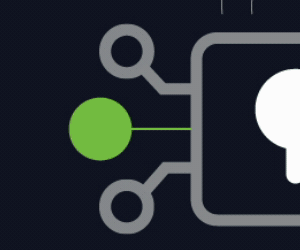Agencies need to adopt a strategic, proactive threat intelligence strategy swiftly to defend against regular ransomware, nation-state and rising artificial intelligence–powered cyberattacks.
This is especially true for national security efforts, as all 500 public sector CISOs surveyed globally in Trellix’s “The Mind of the CISO” report said their organization experienced a cyberattack in the past year.
The types of cyberattacks remain the same — ransomware, malware and phishing — but the tactics are evolving as cybercriminals adopt AI, making it increasingly challenging for CISOs to keep pace. Effective threat intelligence tools help agencies manage these growing threats, and adopting it as a strategic capability enables them to make faster, better-informed decisions, anticipate risks and build resilience into their operations.
Still, 64% of public sector CISOs continue to approach threat intelligence reactively, and 60% have yet to integrate it into their cybersecurity strategies fully.
Click the banner below to manage the security risks of machine identities.
What support do these CISOs need to move their organization’s threat intelligence use beyond a reactive stance to a proactive operational one? They reported three key challenges when acting on threat intelligence: the evolving threat landscape, limited response options for intel and a lack of executive buy-in.
Operationalizing Intelligence to Understand Evolving Threats
To defend against adversaries who continue to evolve their tactics and become faster, particularly with the use of AI, CISOs should look to operationalize their threat intelligence. Understanding the actor’s motivations, identifying who is most likely to target their organization and anticipating the tactics they’ll use enables agencies to prepare and proactively defend against advanced and emerging threats.
With a more complete picture of potential threats, CISOs can prioritize the investments and integrations needed for identification and mitigation.
AI and Automation Are the Answers to a Lack of Response Options
With the predicted rise of AI-powered attacks by threat actors, CISOs should also look to leverage solutions incorporating AI capabilities to enhance their defense efforts.
Click the banner below for the latest federal IT and cybersecurity insights.
Innovative solutions leveraging AI and automation can play a powerful role in enabling security by enhancing detection, reducing the manual burden and accelerating response efforts. These capabilities complement the overall strategic execution of cyber experts for improved efficiency and resilience.
Communicate in Terms of Risk to Secure Executive Buy-In
Ensuring alignment on budget allocations with the leadership team is an art many CISOs still need to master. To gain budget approvals, CISOs should communicate in terms of risk to help their leadership team understand the implications of a successful cyberattack.
What are the likely financial, reputational and operational impacts to the agency should any of these cyberattacks prove successful? For example, we know nation-state threats are a growing concern to those working in the public sector, with 90% worried that cyberattacks on partner nations could serve as a gateway to attacks on their own governments and critical infrastructure.
Contextualizing what’s happening across regions alongside allies, as well as the implications of attacks on your agency, is helpful information to include in your reporting.
UP NEXT: This Cybersecurity Awareness Month, awareness isn’t enough.
To get started, CISOs should look to established frameworks such as the Cyber Threat Intelligence Capability Maturity Model (CTI-CMM) to help with self-assessment and better understand how to move forward. It’s essential that leadership teams recognize the role threat intelligence will play in the future of cyber and support their CISOs by investing in the capability as a business foundation to ensure operational resilience.













